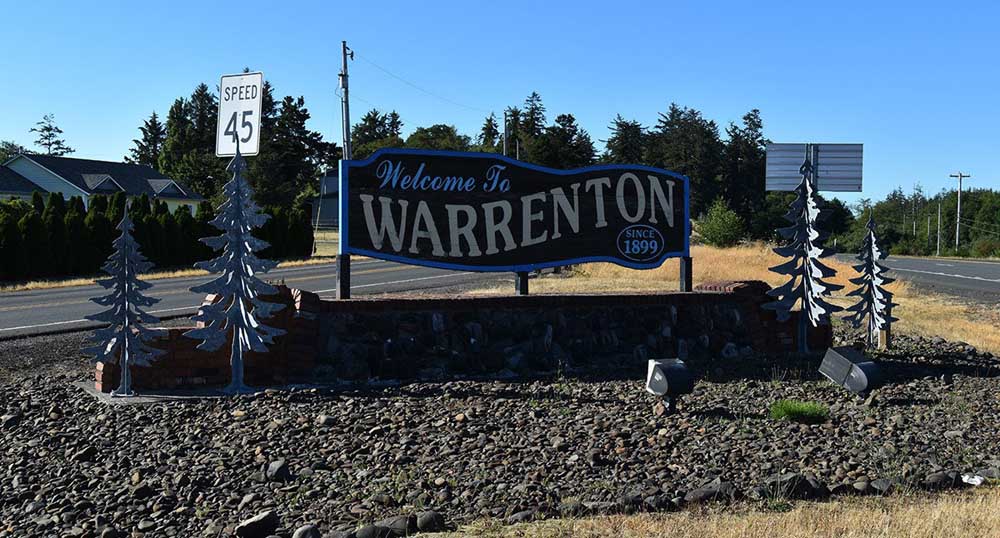Students take a personal interest in the lifecycle of a salmon
Published 4:00 pm Wednesday, February 27, 2013
SEASIDE As the fifth-graders crowded around the fish tank at Seaside Heights Elementary School, teacher John Meyer scooped out several of the 380 half-inch fry swimming there and placed them into smaller containers filled with water.
He made several more scoops, and the students became more excited.
How old are they? a visitor asked.
Three months, Meyer replied.
Thats like 68 years in a humans life! said one of the students.
Meyer finally transferred all of the chinook salmon fry into smaller plastic containers with lids. It was time for the fry to move to their new home: Coho Creek adjacent to the school.
Although sheets of rain were coming down sideways last Friday, the students, dressed in rubber boots and raincoats, eagerly made the short hike out of the school, across the parking lot and down the hill to the stream.
Meyer told those holding the plastic containers to be careful. Thats precious cargo, he said.
The release of the fry into Coho Creek was the culminating event to an adventure that involved the whole school and 500 fertilized fall chinook salmon eggs.
Meyer and his fifth-graders from last year applied for and received a $1,000 grant from the Oregon Education Associations promising practices program. With the money, Meyer bought a 100-gallon aquarium and other equipment and arranged for the delivery Jan. 3 of 500 eggs through the Oregon Department of Fish and Wildlifes eggs to fry project.
We had daily observations, the students did drawings, studied the lifecycles of the salmon. They sang songs and watched videos, Meyer said. We went all in on the life and times of salmon in the Northwest.
The hatched alevin eventually caught the attention of students in other classes, who often walked past the aquarium to watch the tiny sac fry swim with their yolk sacs still attached to provide nourishment.
But once those yolk sacs were gone and the fry became independent little creatures, it was time for the big move, Meyer said.
After reaching the creek, the students huddled under umbrellas. Each student took a turn dipping a cup into the plastic containers and collecting a dozen or more fry. They raised the cup up, Meyer took their photos and the students cheered. Then it was time to pour the fish into the stream.
There was sadness and celebration, Meyer said. They came there pretty emotional.
Although the class started out with 500 eggs, only about 380 fish found their way to the stream. The operation of the aquarium and filter system became an education in its own right for Meyer and the students.
We learned a lot, Meyer said. The filters filled up quicker than I had anticipated and the water quality was affected. Then, the temperature in the school came up a couple of degrees and warmed the tank. There was some die-off in the tank.
The lesson for the kids was that environmental conditions have to be spot on for the fish to survive. One muddy day or one pesticide spray could wipe out a whole generation of fish.
But the experience overall helped students build a relationship with the local habitat, Meyer added.
The more they can connect with it Its my stream, its my wildlife it gives them that ownership ethos, he said.
The lessons also have educational value, too, Meyer pointed out. They meet state and federal science curriculum requirements.
On all fronts, its one of the best projects for kids to be involved in, he said.
The fry will spend time in the freshwater streams seeking shady, hidden pools where the water is calm. As they mature into smolt, they will head for the Necanicum estuary, probably in July and August. Later in the fall, they will swim out to the saltwater environment of the ocean, eventually returning to the Necanicum system to spawn and die. Their carcasses will add nutrients to the stream.
Improving the potential success rate for the fry, as well as other salmon in Coho Creek, was a project sponsored by the Necanicum Watershed Council to replace the narrow, rusting culvert under the schools parking lot last year. The new galvanized steel culvert is 19 feet wide and provides plenty of room for the fish to pass through.
The old culvert was a barrier, Meyer said. It stopped salmon from spawning because they couldnt get past it.
Students and community volunteers also will make sure theres plenty of shade along the stream to maintain a cool temperature for the salmon. A tree-planting event is set from noon to 1:30 p.m. on March 20.
Next years fifth-graders also will experience the lifecycle of the salmon when the fish tank is refilled with more fall Chinook eggs. But Meyer hopes to add some winter steelhead during the year.
I hope that, next year, we will have 1,000 fish, he said.





